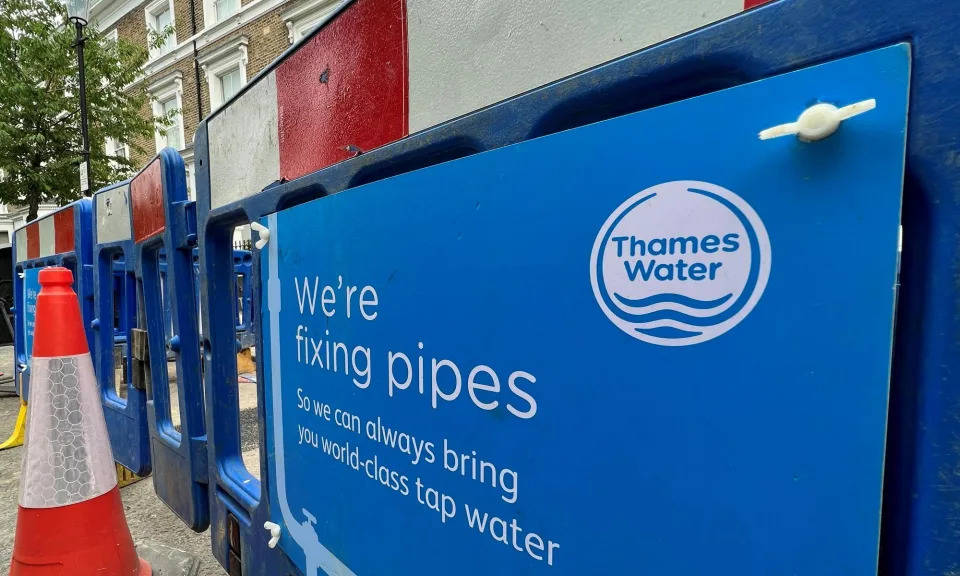CPP IS A SHAREHOLDER
Thames Water shareholders to inject £1.5bn as part of business overhaul

Thames Water shareholders will inject as much as £1.5bn into the company as the UK’s biggest water utility seeks to accelerate a shake-up of its business amid regulatory scrutiny over its treatment of sewage.
Investors will provide an initial £500mn of new equity during this financial year, the group said, which serves almost a quarter of the UK population with water and wastewater services. Thames Water is working with investors on plans to provide a further £1bn of equity.
“[The funding] will be subject to certain conditions, to drive Thames Water’s turnaround over the remainder of the current regulatory period, and establish a solid foundation for Thames Water’s long-term growth,” the water utility said on Thursday.
Ofwat, the industry watchdog, raised “serious concerns” in March over the sector’s treatment of sewage. The regulator said it is pursuing “enforcement action” against Thames Water and four other groups.
“We have made good progress in fixing the basics and tackling the structural challenges in our business as well as laying the foundations for our long-term recovery,” said chief executive Sarah Bentley.
Thames Water has approved an £11.5bn business plan for the period ending March 31 2025, which aims to improve outcomes for customers, and tackle leakage and river health.
The latest plan includes a £2bn increase in expenditure from the £9.6bn that was previously allocated. Thames Water launched an overhaul of its business in March 2021.
A detailed three-year analysis that came to light in October showed Thames Water illegally discharged the equivalent of two years’ worth of untreated sewage into rivers.
Thames Water/utilities:
investors tapped for cash after
deluge of complaints

Removing the dead hand of the Treasury was meant to boost investment in the water companies privatised in 1989. But after an initial surge, investment slumped as owners engineered lavish returns. That sowed the seeds of operational and financial problems in parts of the sector. As anger mounts over sewage discharges into rivers, investors are now being asked to shore up strained balance sheets.
On Thursday, the UK’s biggest water company Thames Water announced it was raising as much as £1.5bn in extra capital from investors, including the UK’s biggest private pension fund USS. Painful but at least all investors participated. When Southern Water received a £1bn emergency equity injection from the Australian infrastructure manager Macquarie last year, existing investors were heavily diluted.
Thames Water is also being pursued by the regulator over its treatment of sewage, after repeated illegal discharges. It is not alone. A majority of wastewater companies in England and Wales now face enforcement action. This week regulator Ofwat added Pennon-owned South West Water to the list.
The frequency of illegal spills might suggest water companies view penalties as simply the cost of doing business. But investors do take the issue seriously. After Ofwat’s move on Pennon was announced, £185mn was wiped from its market value. That is more than six times the maximum fine, which is 10 per cent of relevant revenues.
Significant investment — between £23bn and £80bn — might be needed to cut down on river pollution, says Jefferies. Passed on to customers, that would put bills up between 16 per cent and a third. That would be unacceptable given the cost of living crisis. Companies might have to take some of the strain.
Water investors will get the first inkling of their post-2024 returns after Ofwat publishes its draft methodology next month. JPMorgan expects the allowed cost of equity to be 20-40 basis points lower than the 2019 review. Every 25 basis points of allowed cost of equity is worth 2-3 per cent of earnings per share for quoted companies United Utilities, Severn Trent and Pennon.
Investing in monopolies with inflation-linked revenues has obvious appeal. But mounting public anger over pollution will force the slowpokes to clean up their act. Shareholders should be braced for higher investment and lower returns.
Most Related Links :
todayuknews Governmental News Finance News



















